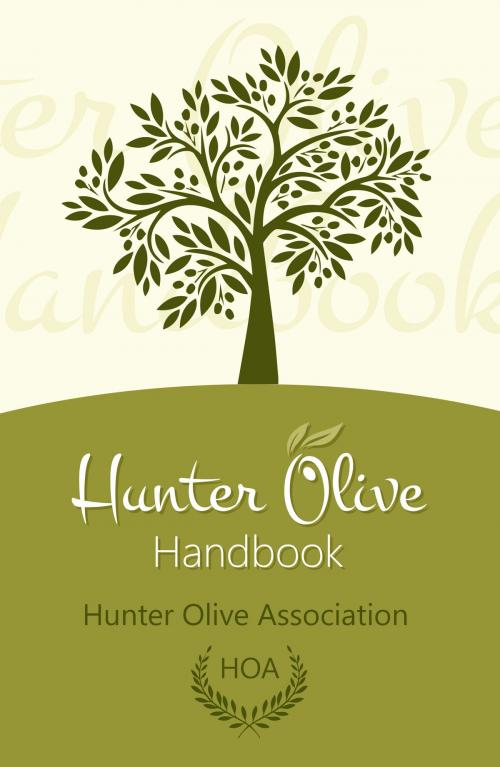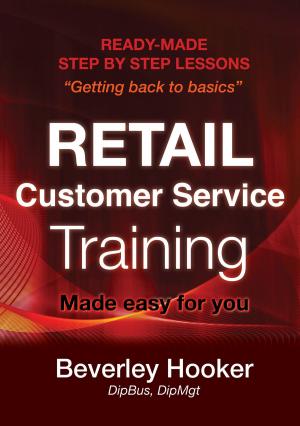Hunter Olive Handbook
A Practical Guide for Sustainable Olive Production
Nonfiction, Science & Nature, Technology, Agriculture & Animal Husbandry| Author: | Hunter Olive Association (HOA) | ISBN: | 9781925427899 |
| Publisher: | Australian eBook Publisher | Publication: | December 15, 2009 |
| Imprint: | Language: | English |
| Author: | Hunter Olive Association (HOA) |
| ISBN: | 9781925427899 |
| Publisher: | Australian eBook Publisher |
| Publication: | December 15, 2009 |
| Imprint: | |
| Language: | English |
For the two years 2013 and 2014 most olive growers in the lower Hunter Valley experienced poor grove performance. Yields, generally, were well below standard and in many cases non-existent.
There was much discussion between the growers as to the cause. All sorts of theories were advanced but no one suggested that perhaps the growers themselves may have contributed to the problem.
The Hunter Olive Association decided that it was important to develop a better understanding of the causative factors and, if possible, to develop guidelines to assist growers to make informed decisions and to take actions to develop sustainable production levels. Over a 15 month period the committee conducted a detailed study of representative groves across the Hunter. In return for professional mentoring and consulting, growers agreed to provide data and share experiences on varieties, irrigation, fertilisation, outcomes and more.
This handbook documents the findings and suggests a number of practical and strategic initiatives based on the collated evidence. Unsurprisingly, many of the findings relate to paying better attention to agricultural basics. It found that excellent gains in olive production levels can be achieved by the implementation of specific programs; especially those of tree pruning and grove irrigation. It is clear that serious growers need to work their groves with a broader, more disciplined approach. There are no silver bullets.
The good news is that new benchmarks have been established that show the essentials of developing a sustainable olive business in the area. The essence of the success is to have a high quality product that will enable a better than average financial return. This requires work and does not happen by accident.
This is a practical handbook for those growing olives and for those who are thinking about doing so. These guidelines are factual and concise. The vast majority of olive growers in this country are small growers with less than 2000 trees in their grove. In the main they are searching for information and hungry for guidance. They are the heart of the industry, and this book is for them.
For the two years 2013 and 2014 most olive growers in the lower Hunter Valley experienced poor grove performance. Yields, generally, were well below standard and in many cases non-existent.
There was much discussion between the growers as to the cause. All sorts of theories were advanced but no one suggested that perhaps the growers themselves may have contributed to the problem.
The Hunter Olive Association decided that it was important to develop a better understanding of the causative factors and, if possible, to develop guidelines to assist growers to make informed decisions and to take actions to develop sustainable production levels. Over a 15 month period the committee conducted a detailed study of representative groves across the Hunter. In return for professional mentoring and consulting, growers agreed to provide data and share experiences on varieties, irrigation, fertilisation, outcomes and more.
This handbook documents the findings and suggests a number of practical and strategic initiatives based on the collated evidence. Unsurprisingly, many of the findings relate to paying better attention to agricultural basics. It found that excellent gains in olive production levels can be achieved by the implementation of specific programs; especially those of tree pruning and grove irrigation. It is clear that serious growers need to work their groves with a broader, more disciplined approach. There are no silver bullets.
The good news is that new benchmarks have been established that show the essentials of developing a sustainable olive business in the area. The essence of the success is to have a high quality product that will enable a better than average financial return. This requires work and does not happen by accident.
This is a practical handbook for those growing olives and for those who are thinking about doing so. These guidelines are factual and concise. The vast majority of olive growers in this country are small growers with less than 2000 trees in their grove. In the main they are searching for information and hungry for guidance. They are the heart of the industry, and this book is for them.















